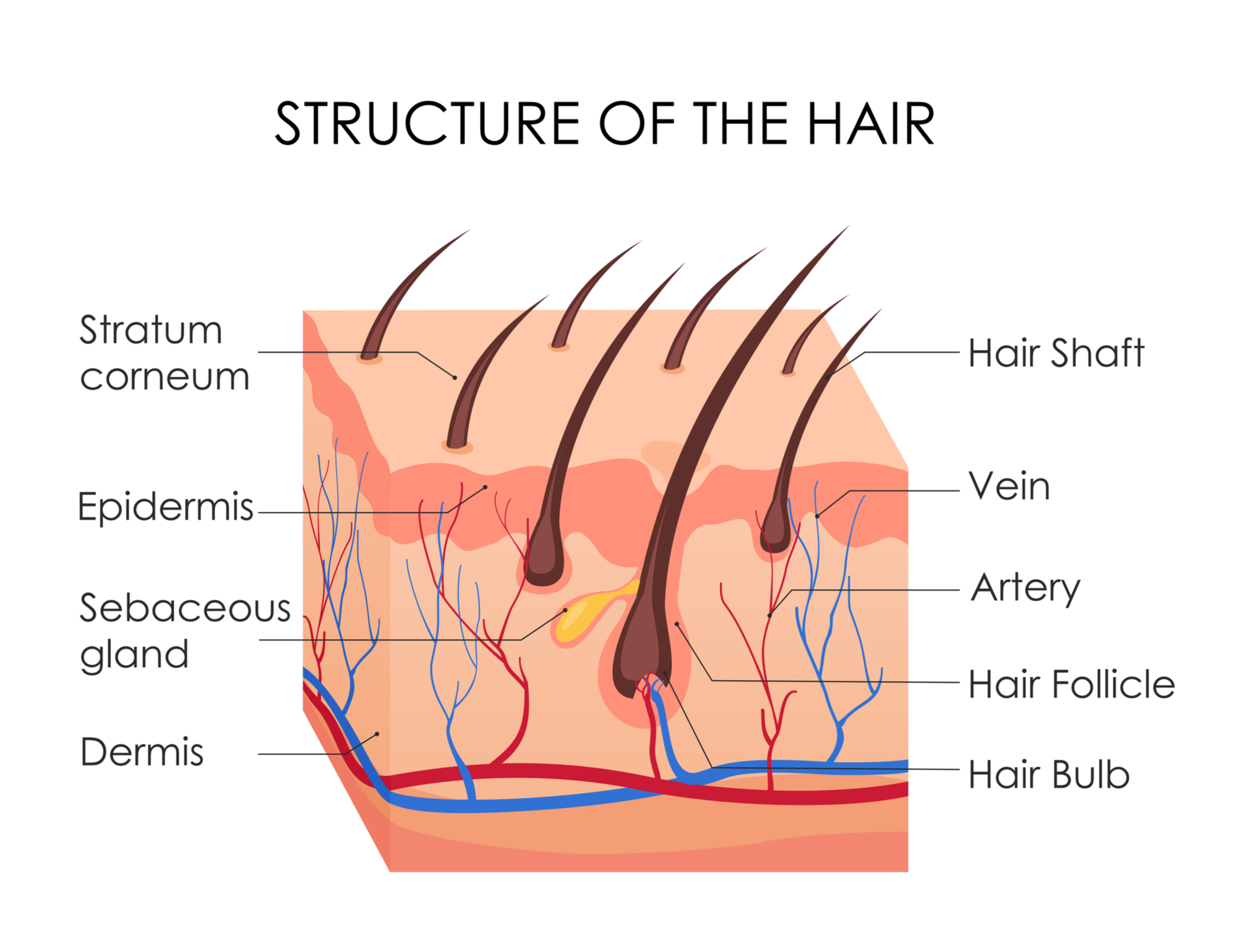As you’re first looking into hair loss and hair loss treatments, you're probably encountering dozens of terms that you've never heard of.
Determining what type of hair loss you may have and which treatment might be most beneficial can be confusing when medical jargon gets involved.
For quick reference, here’s our concise, alphabetized guide to common head and scalp terms used by doctors when referring to hair loss and head anatomy.
Parts of the Head
Crown
Sometimes called the vertex, the crown of the head is the highest point (top) of the skull. A line on the skull called the sagittal suture lies along the crown and connects bones composing the skull.
Alopecia areata and androgenic alopecia are the most common types of hair loss affecting the crown. Androgenic alopecia is more commonly known as male or female pattern baldness, while alopecia areata is an autoimmune condition where the immune system attacks male and female hair follicles.

Frontal Region
The forehead and area just above the temples is the frontal region of the head. When hair loss involves a receding hairline and loss of hair around the temples, a dermatologist may refer to the "frontal region" of the head. Men in the early stages of male pattern baldness will initially notice thinning and loss of hair affecting the frontal region. Later, the classic "U" shape of male pattern baldness will become more visible as hair loss progresses.
Mid-scalp region
Located between the crown and frontal region, the mid-scalp is the area of the head about an inch above the temple. Although hair thinning occurs in the mid-scalp region, actual hair loss does not typically begin in this region. Men with male pattern baldness keep most of the hair on their mid-scalp until the late stages of androgenic alopecia.
Nape
The nape starts at the hairline extending over the back of the neck and ends where the bottom of the neck meets the back. Hair loss at or just above the hairline on the nape is typically due to alopecia areata. Another, less common hair loss condition called frontal fibrosing alopecia (FFA) can affect the nape's hairline. FFA is mostly diagnosed in older women between 40 and 70 years old. In some cases, women with FFA may lose hair along the frontal hairline as well.
Parietal Ridge
The curve downward from the top of the head to the sides of the head is called the parietal ridge. A bony ridge that starts about two inches above the tops of the ears, the parietal ridge is where men with male pattern baldness typically do not lose their hair. Even as male pattern baldness progresses, hair along the parietal ridge may become thin but doesn’t always fall out completely.
Vertex Transition Point
Also called the posterior hairline or simply the vertex, the vertex transition point on the head defines the area between the crown's vertical plane and the mid-scalp's horizontal flatness. The vertex is where the classic "bald spot" appears in men. Women with hair loss on the vertex transition point may have androgenic alopecia or alopecia areata.
Scalp Components and Hair Loss
It is also helpful to know about what happens within the scalp to cause hair loss. For example, hair follicles actually represent the two parts of a strand of hair: the follicle and the shaft.
Follicle
Each individual hair strand emerges on the scalp from a tunnel-like follicle that extends from the epidermis down into the dermis of your skin. The base of the follicle contains blood vessels to nourish hair cells. Surrounding the follicle base is the bulb, which actually gives each hair "life" with active cells that are constantly dividing.
Follicles are protected by an inner and outer sheath that helps form hair shafts essential for hair to grow. Oil glands and erector muscles are also found around follicle sheaths.
Hair Shaft
Composed of keratin, a hard protein found in fingernails and toenails, the hair shaft is a three-layered structure that gives hair its color. Genetic defects to hair shafts can cause conditions leading to hair loss.
Loose anagen syndrome is a hair shaft defect that allows hair to be easily pulled from hair follicles.
Traction alopecia is not really a hair loss disorder but comes from constantly wearing headbands, tight ponytails or cornrows.
Pulling at the same hair repeatedly for a long time can damage the hair shaft and follicles enough to stop hair from growing normally.
Scalp Skin and Connective Tissue
The scalp consists of five layers of different tissues, but generally only the top two layers are involved in hair loss conditions. The skin contains sebaceous glands (oil glands), sweat glands, capillaries and hair follicles. The superficial fascia (dense connective tissues) lies directly under the skin and contains nerves, blood vessels and lipid tissue. Hair follicles reach the superficial fascia and are nourished by blood and fat cells in this layer.
Some scalp disorders that are not associated with androgenic alopecia or alopecia areata can cause hair loss. Inflammation of the hair follicles (folliculitis) is typically caused by bacterial, fungal or viral infections. Seborrheic dermatitis may cause hair loss as oil glands produce excess amounts of sebum that could lead to interruptions in the hair growth cycle. When itching of the scalp is severe, constantly scratching the scalp can also pull out hair and cause hair thinning.

What To Know About Treating Hair Loss
Dealing with hair loss can be daunting, and both men and women often go years without addressing the issue simply because it’s such a sensitive topic.
Here’s the good news: hair loss is often quite treatable, and it’s incredibly common. It helps to start treatment when you’ve still got hair on your head, however.
Shapiro MD’s founding dermatologists have been in private practice for three decades, and the natural formulations we’ve patented were formulated specifically for any hair type. Our Shampoo and Conditioner work by fighting DHT (dihydrotestosterone), the hormone credited with most male and female pattern hair loss. These formulations fight DHT at the scalp, helping to promote thicker- and fuller-looking hair with regular use. Combined with the clinical power of minoxidil or finasteride (for men), hundreds of thousands of customers have chosen Shapiro MD for their hair health needs.




